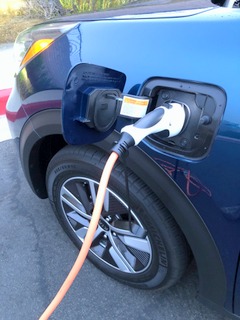Adding Up All the Expenses for your Wheels
This article may contain affiliate linnks.
When it comes to buying a car, there is more than meets the eye. On the surface, it may seem like all you need to worry about is the purchase price, but that is just the tip of the iceberg. In reality, there are a lot of costs that come with owning a car. If you’re not prepared for them, they can really add up. We’ve put together a comprehensive guide to help you understand all the costs associated with owning a vehicle.
Maintenance Costs Associated With Car Ownership
The maintenance costs for your vehicle depend on numerous factors. If you buy a used car with tens of thousands of miles, you’re going to have higher maintenance costs than someone who buys a brand-new car, since used cars require more frequent repairs and servicing.

Your car’s make and model also affect how much you’ll spend on maintenance. For example, a German luxury car would cost far more to maintain than a new Chevrolet sedan. If you drive an electric vehicle, these costs may be lower since there is no oil to change and fewer moving parts that can break down.
If you live in an area with a harsh climate, that will also contribute to higher maintenance costs, as your car will be more susceptible to wear and tear. All of these factors considered, the average driver spends about $600 per year on car maintenance. However, this number can fluctuate quite a bit depending on your individual circumstances.
Insurance Costs
Auto insurance can be extremely expensive, depending on your driving record, the make and model of your car, and your age and gender. Insurance rates can also vary based on the company you choose, which is why you should check out multiple insurance companies ahead of time.
Young drivers, in particular, tend to pay a lot for insurance because they are seen as high-risk by insurers. If you’re looking to keep your insurance costs down, shopping around and comparing rates from different companies is important.
You should also consider raising your deductible, which is the amount you have to pay out of pocket before your insurance company steps in. By doing this, you can lower your monthly premium, although it’s important to make sure you can still afford to pay your deductible if you do get into an accident. The average driver spends about $1,630 per year on car insurance, which equates to about $135 per month.

Gasoline Costs
The cost of gasoline is always fluctuating, but it’s something you need to factor in when budgeting for your car. If you have a long commute or do a lot of driving, you’re going to end up spending more on gas than someone who only drives a few miles each week. The average driver spends about $200 per month on gasoline, but this number will be higher or lower depending on how much you drive. If you have to travel a lot for work, school, or family obligations, you should budget accordingly.
Depreciation Costs
Depreciation is one of the biggest costs associated with owning a car. In simple terms, it’s the loss in value that your car experiences over time. Most new cars lose around 20% to 30% of their value in the first year alone. After that, depreciation slows down but doesn’t stop. By the time your car is five years old, it will likely be worth less than half of its original value.
Customizations
If you want to add XK Glow neon, custom body kits, or other modifications to your car, you must be prepared to spend some money. These types of customizations can be expensive, and they may not even increase the value of your car when it comes time to sell. If you’re thinking about customizing your car, make sure you do your research and budget accordingly.
Endnote
Owning a car is expensive, but it doesn’t have to break the bank. By being aware of all the costs associated with car ownership and budgeting accordingly, you can ensure that you’re prepared for anything.
